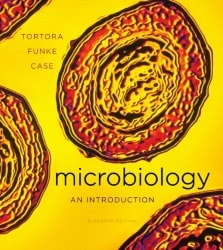How many nanometers make up 1 micrometer?
1000
How many micrometers make up 1 nanometer?
0.001
What is the path of light in the compound light microscope?
Light rays from an illuminator pass through a condenser, which directs the light rays through a specimen. Light rays pass through the objective lens. It is transmitted through the body tube to the ocular lens.
The ability of the lenses to distinguish two points.
Resolution
Shorter wavelengths of light provide what type of resolution?
Greater
Dark objects are visible against a bright background;
Brightfield
Used to examine live microorganisms that either are invisible in the ordinary light microscope, cannot be stained by standard methods, or are so distorted by staining that their characteristics are obscured.
1
Brightfield
Useful because the internal structures of a cell become more sharply defined, permitting detailed examination of living microorganisms.
Phase-Contrast Microscope
Is it necessary to fix or stain a specimen when using Phase-Contract microscopy?
No.
Uses the ability of substances to absorb short wavelengths of lights and give off light at a longer wavelength.
Fluorescence
Brings together two sets of light rays, direct rays and diffracted rays, to form an image
Phase-Contrast
What are cells stained with if they do not naturally fluoresce?
Fluorochromes
Measures sound waves that are reflected back from a specimen; used to study cells attached to surfaces
Scanning Acoustic
What is the resolution of the Scanning Acoustic Microscope?
1 micrometer
Used for images that are too small to be seen with light microscopes, such as viruses
Electron Microscope
A beam of electrons passes through ultrathin sections of a specimen, then through an electromagnetic lens, then focused on a projector lens.
Transmission Electron Microscope
What microscope has specimens that may be stained with heavy-metal salts for contrast?
Transmission Electron Microscope
What is the resolution and magnification of a Transmission Electron Microscope?
10 pm and 10,000 to 100,000.
What is the resolution and magnification of the Scanning Electron microscope?
10 nm; 1,000 to 10,000.
An electron gun produces a beam of electrons that scans the surface of an entire specimen; secondary electrons emitted from the specimen produce a three-dimensional image.
Scanning Electron Microscope
Do gram-positive or gram-negative bacteria have a thick peptidoglycan cell wall?
Gram-positive
Which bacteria has a layer of lipopolysaccharides (LPS)?
Gram-negative
What is the first step of gram staining?
Application of crystal violet (purple dye)
What is the second step of gram staining?
Application of iodine (mordant)
What is the third step of gram staining?
Alcohol wash (decolorization)
What is the final step of gram staining?
Application of safranin (counterstain)
Which microscope shows internal structures and the outline of the transparent covering?
Brightfield Microscope
In which steps are gram positive and gram negative bacteria the same colors?
Steps 1 and 2.
What color are the gram-negative bacteria in the third step?
Colorless, which is why safranin is applied.
In step 4, what color are gram-negative bacteria?
Pink.
What method is the most important staining techniques in medical microbiology?
Gram Method
True or false:
Gram staining results are universally applicable?
False, some bacterial cells stain poorly or not at all.
Is gram-positive or gram-negative bacteria more resilient to antibiotics? Why?
Gram-negative because antibiotics cannot penetrate the LPS layer.
What stain differentiates bacteria into two distinct groups?
The acid-fast stain.
Binds strongly to bacteria that have a waxy material in their cell walls.
The acid-fast stain.
What stain is used to identify Mycobacterium and Nocardia?
Acid-fast stain
What stain is applied during acid-fast in the first step?
Carbolfuchsin
What is the second step in acid-fast staining and why is it performed?
The slide is gently heated for several minutes. Heating enhances penetration and retention of the dye.
In the third step of acid-fast staining, what is the slide washed with?
Water.
What is the fourth step of acid-fast staining and what does it do?
The slide is treated with acid-alcohol. It removes the red stain from bacteria that are not acid-fast.
What color do the acid-fast microorganisms appear to be?
Red.
After decolorization, what color are non-acid-fast bacteria?
Colorless.
What color counterstain is applied in the final step of acid-fast stain?
Methylene blue.
What is negative staining used for?
Determining cell size and arrangement; It can also be used to stain cells that are too delicate to be heat-fixed.
